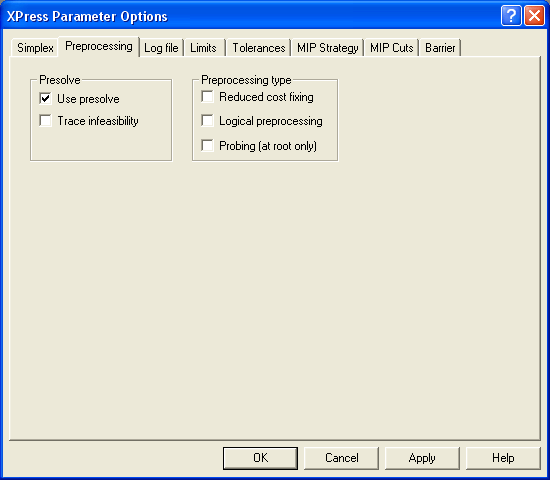
Figure 4.57: The Tolerances tab in XPRESS Options Dialog Box
You can change the Tolerances options for XPRESS by choosing XPRESS Parameters from the Options menu and then pressing the Tolerances tab. This will display the dialog box shown below:

Figure 4.57: The Tolerances tab in XPRESS Options Dialog Box
| Option Name | MPL Name | Solver Param | ParamNr | Type | Default | Min | Max |
|---|---|---|---|---|---|---|---|
| Integrality Tolerance | MipIntegerTol | MipTol | 7009 | real | 5e-6 | 0 | 0.5 |
| Reduced cost tolerance | OptimalityTol | OptimalityTol | 7006 | real | 1e-6 | 0 | MAXREAL |
| Pivot tolerance | PivotTol | PivotTol | 7002 | real | 1e-9 | 0 | MAXREAL |
| Relative pivot tolerance | RelPivotTol | RelPivotTol | 7008 | real | 1e-6 | 0 | MAXREAL |
| Matrix element zero tolerance | MatrixZeroTol | MatrixTol | 7001 | real | 1e-9 | 0 | MAXREAL |
| Eta elements zero tolerance | EtaElemTol | EtaTol | 7007 | real | 1e-13 | 0 | MAXREAL |
| RHS zero tolerance | RhsZeroTol | FeasTol | 7003 | real | 1e-6 | 0 | MAXREAL |
| Print values zero tolerance | PrintZeroTol | OutputTol | 7004 | real | 1e-5 | 0 | MAXREAL |
| Relative duality gap | BarGapTol | BarGapStop | 7033 | real | 1e-8 | 0 | MAXREAL |
| Primal infeasibilities tolerance | BarPrimalTol | BarPrimalStop | 7035 | real | 1e-8 | 0 | MAXREAL |
| Dual infeasibilities tolerance | BarDualTol | BarDualStop | 7034 | real | 1e-8 | 0 | 1 |
| Minimal step size tolerance | BarStepTol | BarStepStop | 7036 | real | 1e-10 | 0 | MAXREAL |
| Cholesky decomp. zero tolerance | CholeskyTol | CholeskyTol | 7032 | real | 1e-5 | 0 | MAXREAL |
| Elimination phase of presolve | MarkTolElimPre | ElimTol | 7041 | 0.001 | 0 | 1 | |
| Factorization tolerance | MarkTolFactor | MarkowitzTol | 7047 | real | 0.01 | -MAXREAL | MAXREAL |
The integrality tolerance that specifies the amount by which an integer variable can be different from an integer value in order to be considered integer feasible.
This is the zero tolerance for reduced costs. On each iteration, the simplex method searches for a variable to enter the basis which has a negative reduced cost. The candidates are only those variables which have reduced costs less than the negative value of reduced cost tolerance.
The zero tolerance for matrix elements. On each iteration, the simplex method seeks a nonzero matrix element to pivot on. Any element with absolute value less than pivot tolerance is treated as zero for this purpose.
At each iteration a pivot element is chosen within a given column of the matrix. The relative pivot tolerance, relative pivot tolerance, is the size of the element chosen relative to the largest possible pivot element in the same column.
The zero tolerance on matrix elements. If the value of a matrix element is less than or equal to this value, it is treated as zero.
Zero tolerance on eta elements. During each iteration, the basis inverse is premultiplied by an elementary matrix, which is the identity except for one column - the eta vector. Elements of eta vectors whose absolute value is smaller than eta elements zero tolerance are taken to be zero in this step.
This is the zero tolerance on right hand side values, bounds and range values, i.e. the bounds of basic variables. If one of these is less than or equal to RHS zero tolerance in absolute value, it is treated as zero.
Zero tolerance on print values.
This is a convergence parameter, representing the tolerance for the relative duality gap. When the difference between the primal and dual objective function values falls below this tolerance, the Optimizer determines that the optimal solution has been found.
This is a convergence parameter, indicating the tolerance for primal infeasibilities. If the difference between the constraints and their bounds in the primal problem falls below this tolerance in absolute value, the Optimizer will terminate and return the current solution
This is a convergence parameter, representing the tolerance for dual infeasibilities. If the difference between the constraints and their bounds in the dual problem falls below this tolerance in absolute value, optimization will stop and the current solution will be returned.
A convergence parameter, representing the minimal step size. On each iteration of the barrier algorithm, a step is taken along a computed search direction. If that step size is smaller than minimal step size tolerance, the Optimizer will terminate and return the current solution.
The zero tolerance for pivot elements in the Cholesky decomposition of the normal equations coefficient matrix, computed at each iteration of the barrier algorithm. If the absolute value of the pivot element is less than or equal to Cholesky decomp. zero tolerance, it merits special treatment in the Cholesky decomposition process.
The Markowitz tolerance for the elimination phase of the presolve.
The Markowitz tolerance used for the factorization of the basis matrix.